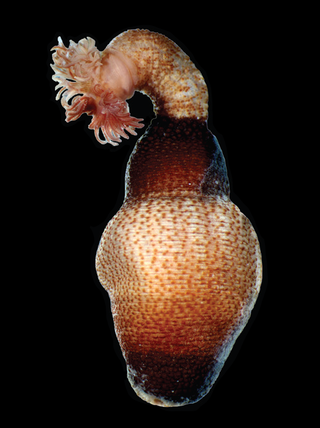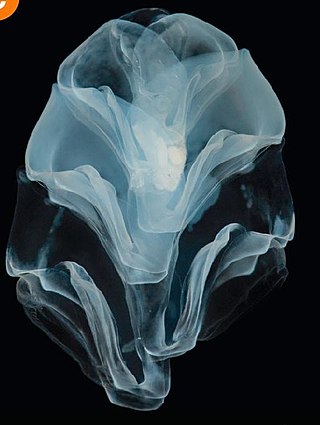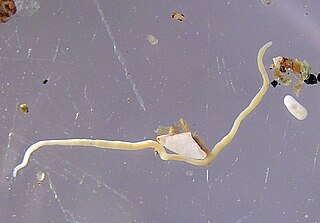
Cirroteuthidae is a family of pelagic cirrate octopuses comprising at least three species in two genera.

The Pneumodermatidae are a family of sea angels, or small floating predatory sea snails or sea slugs. They are pelagic marine heterobranch opisthobranch gastropod mollusks in the clade Gymnosomata.

The Microhylidae, commonly known as narrow-mouthed frogs, are a geographically widespread family of frogs. The 683 species are in 57 genera and 11 subfamilies.
Wilhelm Moritz Keferstein was a German naturalist. He described a number of reptiles and amphibians for the first time.

Gastrophryne, the narrowmouth toads, is a genus of microhylid frogs found in the Americas between Honduras and southern United States. Its name means ‘belly-toad’, referring to its large belly, from the Ancient Greek gastēr and phrunē.

Hypopachus is a genus of microhylid frogs found in the Americas between Costa Rica and the southern United States. They can bury themselves under the ground or moss. Its name means ‘somewhat thick’, referring to its tough skin.

Turritopsis is a genus of hydrozoans in the family Oceaniidae.

Hippotion is a genus of sphinx moths. The genus was erected by Jacob Hübner in 1819.

Sipunculidae is a family of peanut worms.

Golfingiidae is a family of peanut worms.

Synaptidae is a family of sea cucumbers that have no tube feet, tentacle ampullae, retractor muscles, respiratory trees, or cuvierian tubules. They also lack radial canals of the water-vascular system, with only the circumoral ring present.

Antillesoma antillarum is the type species of the peanut worm genus Antillesoma. The genus belongs to the family Phascolosomatidae.

Prosorhochmidae is a family of nemertean worms belonging to the suborder Monostilifera. It contains the following genera:

Forskalia is a genus of siphonophores. It is the only genus in the monotypic family Forskaliidae.

Heterololigo is a monotypic genus of squids containing the single species Heterololigo bleekeri. It was formerly classified in the genus Loligo; some authors still include it there, but DNA evidence supports its separation into a genus of its own. This species is known by the common name spear squid.

The Diphyidae are a family of siphonophores. These are colonial siphonophores with two nectophores arranged one behind the other. The front one includes a somatocyst, while the hind one does not. The somatocyst often contains an oil droplet for buoyancy control. A nectosac in each nectophore allows the organism to swim efficiently.

Hippopodius is a genus of cnidarians belonging to the family Hippopodiidae.
Kephyes is a genus of cnidarians belonging to the family Clausophyidae.

Ototyphlonemertes is a genus of worms belonging to the family Ototyphlonemertidae. The distribution of members of this genus includes Eurasia.















